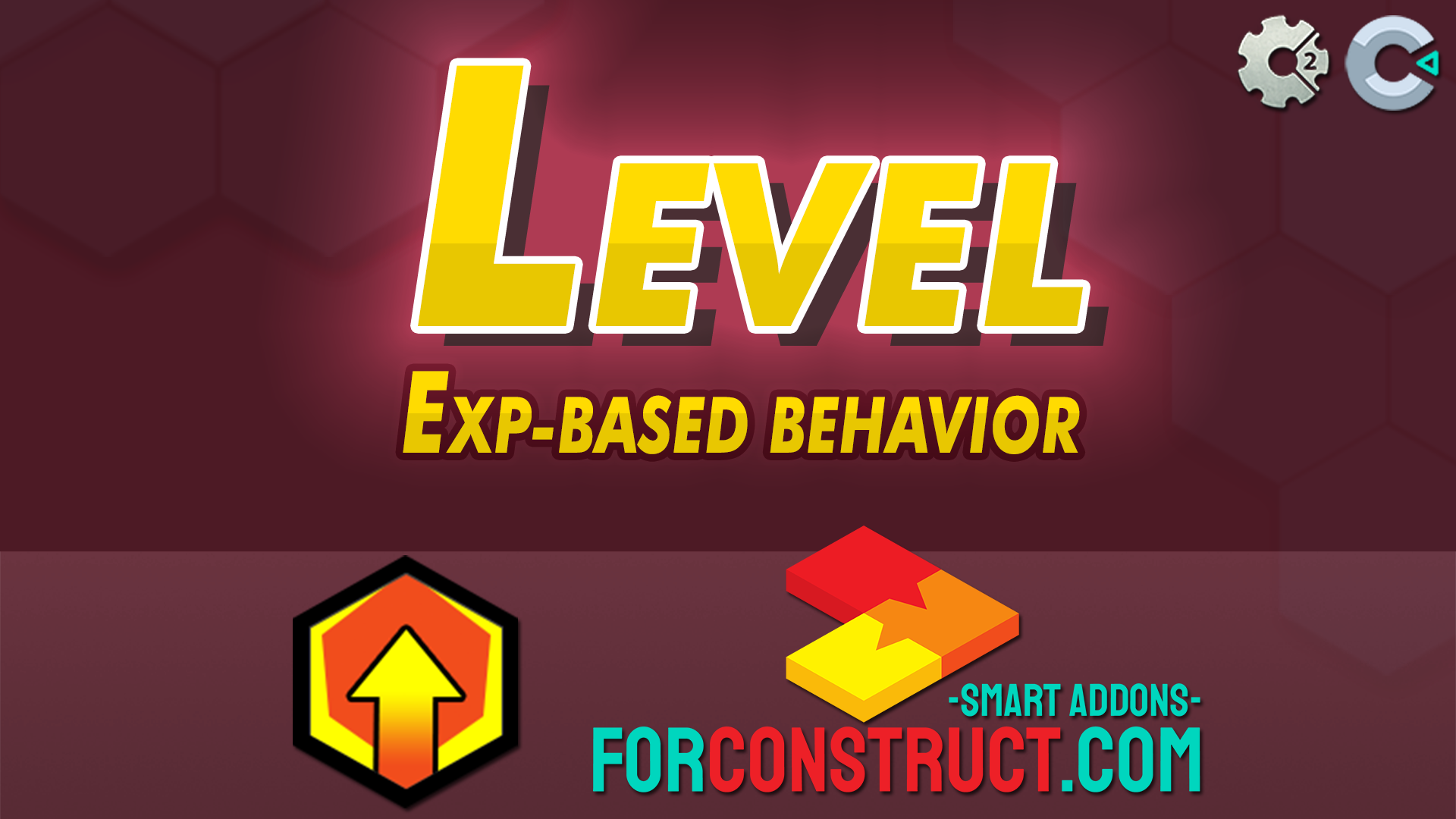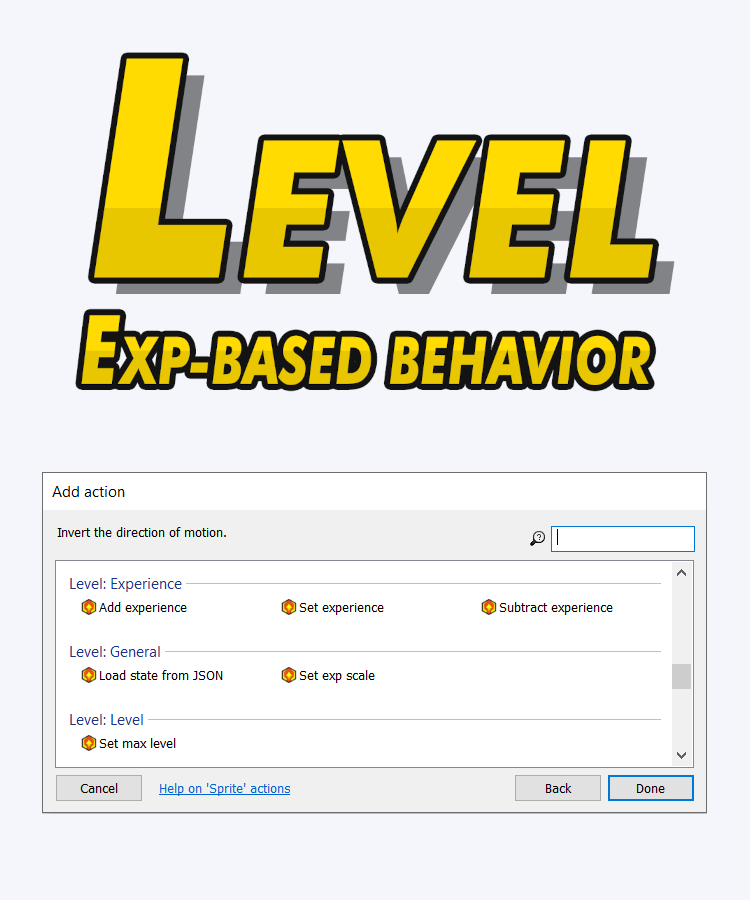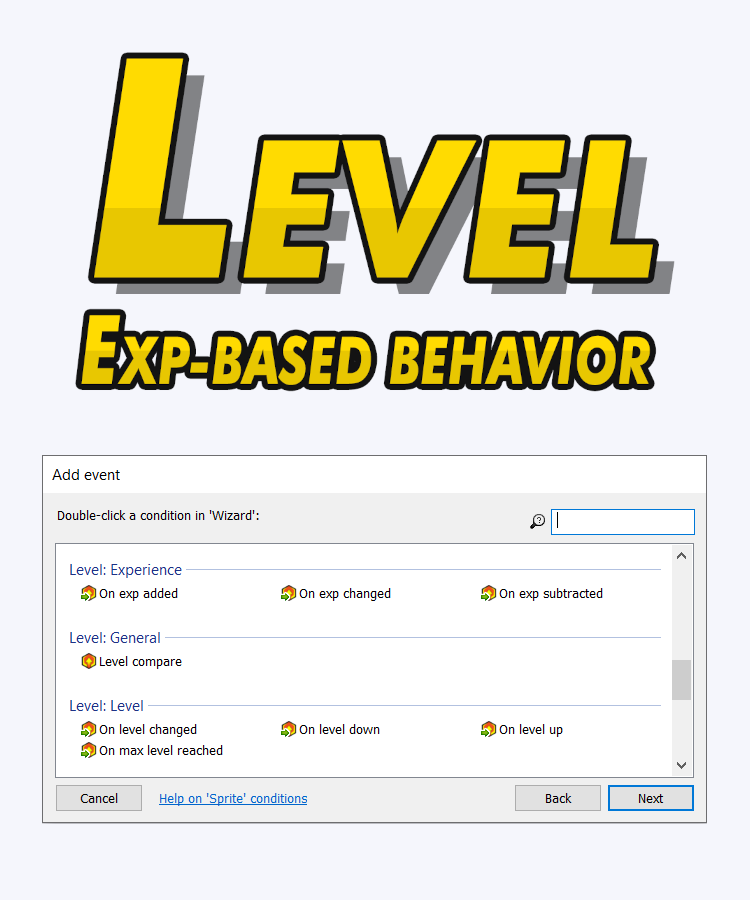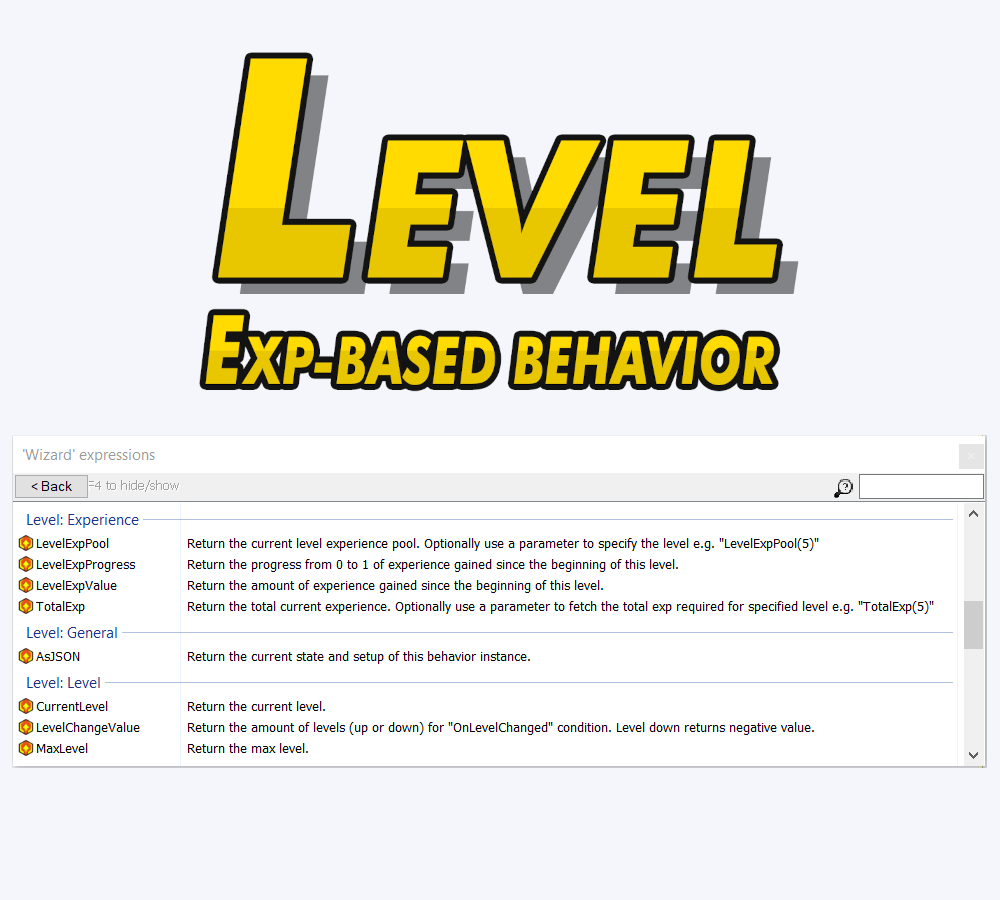Level



Additional Information
Construct 2
Construct 3
WHAT IS LEVEL BEHAVIOR?
Level is a Construct behavior that serves as a tracker and manager of experience points and experience levels – a well known mechanic commonly used in role-play games as well as in other genres. It is a core mechanic of many games, almost a standard solution.
WHY SHOULD YOU USE IT?
If you plan to make an RPG or any other game where you want to introduce a leveling up system, the Level behavior will significantly help you with that. It does most of the calculations for you and requires a minimum of coding. Thanks to it, you can focus on proper design and spend more time on other aspects of your project.
Moreover, this is a behavior, so you can have several different objects (characters, enemies, NPCs, weapons, items etc.) with more than just one instance – each having their own experience, leveling properties and actual progress.
The Level behavior is flexible as it allows you to set different leveling solutions. You can make a level up system where progression is based on a percentage growth, with an infinite amount of levels, as well as specify a custom pattern of leveling tiers like in classic “pen and paper” role-play games and have a limited amount of levels if you like. This also can be changed on the fly thanks to respective actions.
In addition, Levels allows for easy saving and loading the experience setup and progress with JSON files.
LEVEL BEHAVIOR ACTIONS, CONDITIONS, EXPRESSIONS
Take a look into the behavior, what Actions, Conditions and Expressions you find there



HOW DO YOU USE IT?
You simply add it to an object (e.g. sprite) same as other behaviors and set just a couple of properties like base experience, level progression pattern or a maximum level.
Then you use featured conditions, actions and expressions that will determine when and how many experience points are gained (or lost) and what happens when a new level is reached (or lost if applicable).
With the Level behavior by ForConstruct.com Team you can easily add and subtract the amount of experience points currently owned by a specified instance, as well as trigger events that take place upon level up.